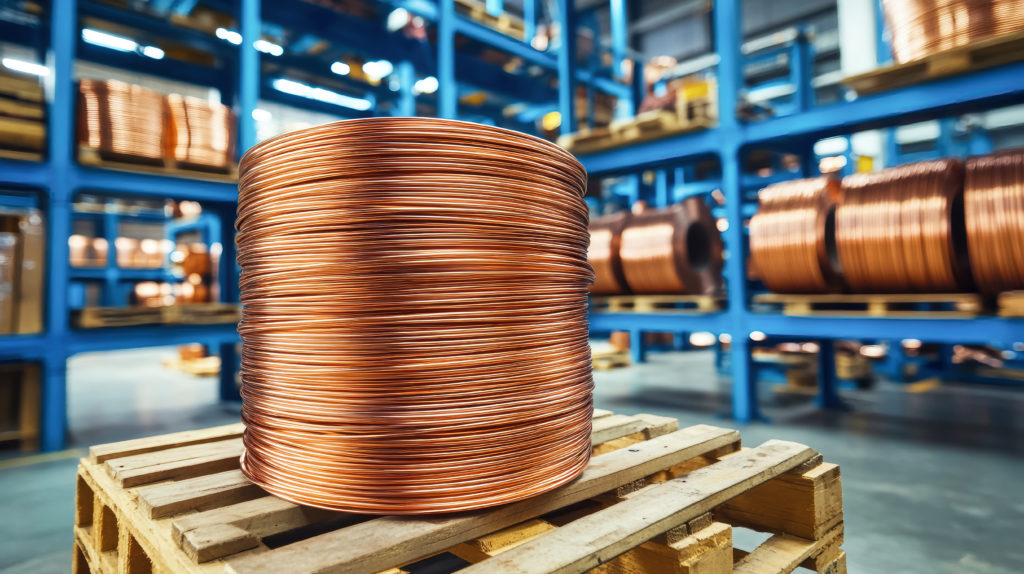Column: Copper market grows wary of what follows its US tariff rush

Copper has been on a tariff high ever since President Donald Trump ordered an investigation into US copper imports in February. But how long will it last and how hard will the come-down be?
The race is on to get as much physical copper as possible through US customs before tariffs kick in. There’s little doubt that copper tariffs are coming. It’s just a question of at what level and when?
The betting is that copper levies will be set at 25%, matching the rate imposed on imports of steel and aluminum.
The market thought it had 270 days, which is the limit for a so-called Section 232 national security investigation. Now it’s not so sure.
A premature unwind of the copper tariff trade adds to the uncertainty around the impact of broader reciprocal trade tariffs due to be announced on Wednesday, which Trump has hailed as “Liberation Day”.
The confused and confusing tariff picture has split market opinion, with some analysts calling for higher copper prices and others warning of a pending crash.
‘Trump time’
The CME spot copper price hit an all-time record high of $5.277 per lb on March 26, surpassing the previous peak of $5.199 recorded during the May 2024 squeeze.
The London Metal Exchange (LME) cash price made it only as far as $10,100 per metric ton, some way short of its May 2024 peak of $10,900.
The gap between US customs-cleared and international prices flexed out to more than $1,600 per ton following a Bloomberg report that tariffs may come within weeks rather than the expected months.
This possibility shouldn’t really have come as a shock. White House trade adviser Peter Navarro said at the time of the Section 232 announcement that the investigation would be completed “in Trump time”.
But the apparent confirmation of what “Trump time” means has left traders unsure as to the shipping window to move physical copper to the US.
Physical flood
Up to half a million tons of physical copper could be heading towards the US to profit from the unprecedented arbitrage opportunity, according to trade house Mercuria.
But will it get there in time?
The physical arbitrage is complicated by the CME’s relatively restrictive list of good delivery brands.
LME available stocks have fallen from 258,425 tons to 106,900 tons since February’s Section 232 announcement, with around half of total inventory now awaiting physical load-out.
But it’s unlikely that much of this metal will make it directly to the US, given the high ratio of Chinese and Russian metal in the LME warehouse system.
Rather, LME stocks will be diverted to physical buyers prepared to swap the South American copper brands that dominate the CME good-delivery list.
Switching locations and swapping brands with the physical supply chain takes time and there may not be as much of it as was commonly assumed.
Bulls and bears
Were copper tariffs to come sooner rather than later, the gravitational pull on copper towards the US may prove to be weaker and shorter-lasting than anticipated.
That means any tightening of supply in the rest of the world would also be less acute than expected.
Just as copper’s own tariff trade looks a lot less predictable, markets generally are braced for the turbulence of the reciprocal US trade tariffs due to be announced this week.
How micro and macro tariffs combine to play out in the copper market is dividing opinion.
Goldman Sachs is in the bull camp, sticking with its forecasts for three-, six-, and twelve-month LME copper prices at $9,600, $10,000 and $10,700 per ton, respectively.
Citi, by contrast, has cut its short-term price forecast from $10,000 to $9,500 per ton and is looking for an average $8,800 in the second half of the year.
That’s still too optimistic for BNP Paribas, which warns of a price crash to $8,500 per ton just as soon as copper tariffs are announced and the arbitrage trade comes to a halt.
If you’re confused about copper, you’re not on your own.
And the price outlook will remain confusing until Doctor Copper, like the rest of us, gets more clarity on Trump’s tariffs.
Don’t hold your breath.
(The opinions expressed here are those of the author, Andy Home, a columnist for Reuters.)
(Editing by Paul Simao)
More News
{{ commodity.name }}
{{ post.title }}
{{ post.date }}

Comments